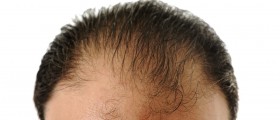
Hair transplantation success rates
Hair transplant surgery is aimed to produce lifelong and life changing results. However, the skill and techniques of hair restoration surgeons may drastically vary. It is important to find a prescreened restoration surgeon, recommended by notable members of medical community or by former patients. It seems like it is really rare to speak to a transplant patient who considers his result a success. In many cases, patients will get just poor or marginal coverage and their problem won’t be solved at all. The best results are achieved if the hair color is close to the skin color, since it gives the better appearance of the hair’s coverage. People with dark skin with dark curly hair will probably get the best results; form a visual point of view. People with light tan and straight dark hair shouldn’t expect the complete coverage.
Is this a permanent solution?
As already mentioned, well done hair transplantation can be a life changing and a lifelong result. However, it doesn’t stop the natural progression of hair loss. Even after the most successful surgery, patient will continue losing 50 to 100 hairs per day and will eventually need to undergo additional transplant procedure as more hair loss occurs. It is important to have a clear understanding of what results to expect before deciding on the procedure.
Whose hair will be transplanted?
Unlike the organ transplantation, in a hair transplant patient is both donor and receiver. The hair is donated from so called donor sites, on the patient’s body. Donor sites are usually found on the sides and the back of the head. Extracted from here, hair follicles are transplanted to the balding parts into tiny slits created using the surgical tools.
Is it expensive?
The prices for this procedure may drastically vary, but they are equally expensive. Moreover, there is no health insurance company that is paying for this type of surgery, since it is optional.

















Your thoughts on this
Loading...